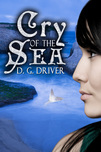 It’s been a productive writing year for me, although my bank account says differently. I have worked hard all year long on one project or another. Partly to help me remember what I’ve done, and also to share with anyone who is curious, I’ve decided to jot it out as my end of the year blog post. January: I was busy this month doing final proof-reading for Cry of the Sea. I also had begun re-typing my old published and out-of-print novel Special into my computer and making some fixes on it as I went. 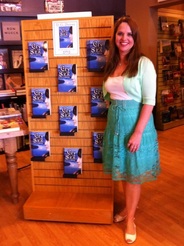 February: There were some last minute fixes on Cry of the Sea that literally went up to the week before it went to print. On February 23rd it was released very quietly to the world. I continued to work on rewriting Special, and I decided to rewrite my novel On the Water as a YA novel with a girl protagonist, as opposed to the boy MG novel that was not getting any requests from publishers or agents. I wrote out the outline. February-March: I mostly worked on my rewrite of On the Water and finished at the end of March. I had my book release party for Cry of the Sea at Parnassus Books, and a lot of my friends from work came, along with two of my favorite SCBWI Nashville authors, Tracy Barrett and Rae Ann Parker.  May: At some urging from my friends and a couple reviewers who read Cry of the Sea, I began plotting a sequel. I’d never planned on Cry of the Sea being a series, but I had thought about other adventures Juniper could have with mythological creatures. I came up with an idea that I thought might work. I also finished rewriting my book Special. I gave it a new title: No One Needed to Know and submitted it to a couple publishers. Also this month I learned of a new publisher looking for novellas. I decided to rewrite a short story of mine called Passing Notes into a novella. June: This month I finished Passing Notes and sent it to that publisher. It was rejected very sweetly in one day because the publisher already had a book with a similar theme. I turned around and sent it to Fire and Ice, publisher of Cry of the Sea. They accepted it and scheduled it to be published in January, 2015. July-August: I heard from Schoolwide Inc. that they liked No One Needed to Know but wanted some significant rewrites. I worked on those and turned them in by the end of August. I got a contract for the book to be published in their subscription library in March, 2015. Still not sure what that entails exactly, but it’ll be a fun adventure. I finally got an iPhone in July and learned how to do Instagram. It has become my favorite social media platform. I still hate Twitter and would like someone to explain to me why it’s supposed to be cool.  September-October: I finally started writing the first couple chapters of Whisper of the Trees (title provided by Kathleen Young), my sequel to Cry of the Sea. It was promptly interrupted, however, when a couple authors in a critique group at the SCBWI Fall conference suggested On the Water should be a Middle Grade novel. Immediately after that, an agent asked me to rewrite On the Water as a Middle Grade novel and cut 10,000 words out of it. I only was able to cut 6,000 and sent it back to her. She wound up rejecting it, but a couple other agents have asked to read it. We’ll see. Maybe it finally found its correct form. 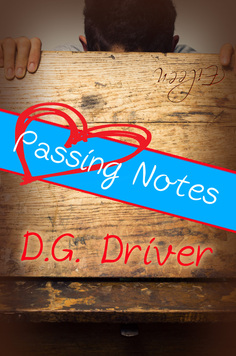 November: I knew I wasn’t going to have time to do NaNoWriMo, which kind of bummed me out. I wanted to use the challenge to force myself to finish Whisper of the Trees. However, my husband, daughter and I got cast in a play and had rehearsals for that all month. Plus, my editor for Passing Notes sent me her suggestions, and my editor for No One Needed to Know had some more fixes he needed as well. I had to spend what little writing time I had to work on those. I didn’t get much “new” writing done. I did, however, finally finish putting together my book trailer for Cry of the Sea. December: At last, the play ended on the 14th! It was fun, but oh my gosh it stole so much time. I got back to writing Whisper of the Trees. I also had to do some proofreading for Passing Notes and plan my book cover reveal. Passing Notes is scheduled to be released on January 29th, 2015. As of today, I’m at 25,000 words on Whisper, but I hope to write at least 10,000 more by January 4th (because I have some time off work) and finish the first draft soon. It is my main focus now. Writing Goals for 2015:
Thanks for your support. Please leave a comment or a thought. I’d love to hear from you. 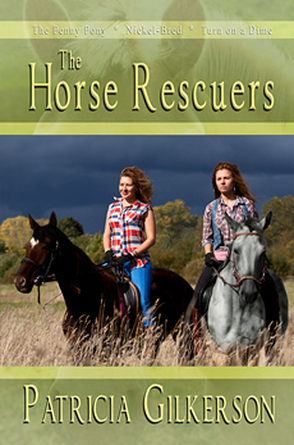 My guest author today is another author with my publisher Fire and Ice. She writes a series of horse-related stories. I remember how much I loved Black Beauty as a child. I think I did a book report on it in 4th and 5th grade unbeknownst to my teachers. I was also a big fan of The Black Stallion. I haven't read a horse book since those years, but I know girls still love them. I think Patricia Gilkerson might have something very charming for middle school girls looking for a good read. She writes today about how her series of horse stories got published and what's coming up in the future. Patricia Gilkerson: My first experience writing a series was with my very first Young Adult novel, The Penny Pony, about two friends who rescue an abused horse. Previously, in shopping it around and collecting rejections, I cleverly (I thought) alluded to a series using U.S. coinage in the titles. I strongly felt that a series like that would work and be fun to write. A friend told me that publisher Melange Books’s YA division, Fire and Ice, was looking for horse stories, so I contacted them. Happily, they liked it and asked if I had more, to which I said enthusiastically, “No, but I can write them!” Two years later, I have three horse stories published as ebooks, The Penny Pony, Nickel-Bred, and Turn on a Dime, using the same two friends and having them rescue horses in dire straits. Fire and Ice put them together as a collection in print: The Horse Rescuers, Volume 1. My challenge now is to incorporate the two friends with more horse rescue situations, using quarter, half-dollar and dollar in the titles. I have no idea where I will go with these, which have to be appropriate to my 10-15 yr. old target audience, involving realistic situations for kids that age. A relative suggested having a horse rescue a human! I like that idea a lot--maybe for the final book. But what plots and what breed of horse to use? And, if things go well, will I want to expand into international money: euros, pesos, and loonies? One difficulty for me is to remember the voices of the repeating characters so that they stay true to themselves. Each book is stand-alone, so you don’t have to read the previous books to enjoy it. Therefore, I have to repeat a lot of background information in a way that doesn’t slow down the story. My second experience with writing a series was a book intended to be a three-part fantasy series involving a teenage boy who is drawn into the Great Forest (a metaphor for Faerie) to rescue his father from a fatal illness. The second book would have him go back to rescue his mother, while the third would have him save Faerie itself from withering away. Each book would build on the last so that the final book was the climax to the whole series. However, when almost done with the last book, I began to feel that I should combine all three into one longer book. To do that, I had to remove a lot of repetition and have a story arc that tied it all together. A great example of how your plans can change as your intuition kicks in! That book will be released next spring as The Great Forest of Shee, also published by Fire and Ice YA. Both of these experiences helped me to write better books and learn to trust my gut feelings—and that’s what steers your books in the right direction. Interested in knowing more about Patricia Gilkerson and her work? www.patriciagilkerson.com Buy her books: Penny Pony Fire and Ice (publisher page) Amazon Nickel-Bred Amazon The Horse Rescuers, Volume 1 Fire and Ice (publisher page) Amazon 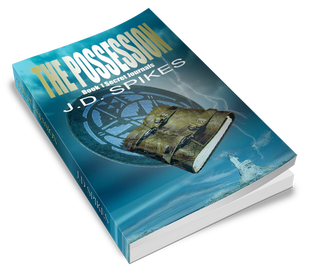 I'd like to introduce you to my next guest author who is sharing her sequel writing story: JD Spikes, author of the Secret Journals series. When she first approached me about being part of this line-up I was hesitant, because her books, while related, aren't necessarily sequels. They are a series with different characters and settings and a common thread that ties them together. However, I thought it over, and I realized that what she had done as an author was extremely clever and creative. It also took a lot of guts to keep writing books with the hope that her readers would stick with her from story to story. Please enjoy what she has to say about all of this. Jeanine (JD) Spikes: Yes – you could see the question practically scroll across their eyes when I discussed my young adult books with anyone. I understood the weirdness of my vision, but I couldn’t stop it. It felt too right. Let me explain. While at my local Borders to buy a sketch pad for my artist son and a lined journal for my writer son, I stumbled on a small journal that called to me and wouldn’t let go. It was emerald green velvet with the embossed word ‘Journal’ on it. I circled that bargain bin, wove through the book aisles, circled the bin again. Thought about the café. Returned to the bin. In the end, I bought that little journal, brought it home, and decided I’d use it as a diary. Just like the heroines of my favorite Victorian novels did, circa Victoria Holt. How cool would that be? The next day I started writing in it, just a paragraph to see how it felt. To my surprise I realized what I wanted to write wasn’t from me or about me, but from a young girl with a secret. I mean, I was already an author for adults, so I knew a story when I heard it. This story had a teen telling it, though. Hmmm. Okay. The Secret Journals were born. I really thought I was writing one story. In it’s inception it was called “The Velvet Journal”, Daphne Wentworth’s retelling of the summer of her 17th year, when she met Zach Philbrook at a haunted lighthouse and her life changed forever. Then I went back to Borders. Straight to the gift area where the journals were displayed. Another journal caught my eye. I didn’t know why – it didn’t look like a diary, like the first one. It was smaller and leather, with a leather cord that wrapped around it and tucked in, to keep it closed. No lines on the inside of this one. You could jot notes to yourself, a sort of working journal, or sketch if you had the need. Why might you have that need? The Leather Journal’s Therese Berard rehabs houses with her dad. He’s a contractor and she does the window dressing. He doesn’t know how she always gets it right, doesn’t know she’s an empath with psychometric abilities. Houses ‘speak’ to her. When they land the Braeburn House rehab and she inadvertently leaves her leather journal there, everything changes. Pictures show up in it. Someone challenges the changes. And then her best friend’s big brother sticks his nose in. Different locations, different characters, different outcomes. But ALL journal-centric, in spooky places in New England, with a triangle of teens and a supernatural element. No-brainer, in my mind. Keep it going. So I did. I realize now, though, that I started to look at journals differently, different than the average buyer. I look for one that jumps out at me, intrigues me. One that says ‘I have a story to tell’. As the stories came, I wrote them. And I started trying to sell them. The traditional publishers weren’t loving a non-series series, especially one with unconnected titles, like The Velvet Journal, The Leather Journal, The Shadow Journal…. I get it. How would they promote it? How do you get kids interested in a group of books that do not have the same characters coming back, the same locations, the same plot lines, when the industry is focused on Trilogy and Series? Enter the small publisher. I’d sold a novella to them as part of an anthology. They knew my work. They knew my work ethic. They said, yes – let us check it out. Awesome! They bought it. I asked them, putting this article together, what made them decide to buy it? Why, when Big Six gatekeepers (editors and agents) didn’t want to take a chance, would they? Lachesis gave permission to share their response. From my Lachesis editor, Joanna D’Angelo (whom I love): The reason why we signed you on is quite simple. You're a talented writer and a gifted story teller. I think that a book series has to have room to grow and expand, just like a TV series does. Look at American Horror Story - it changes season to season but it is still in the realm of the "macabre". Even a "non-series" series like yours, or perhaps an "alternative YA series" has a "link" or connection. It could be a thematic one, or a symbolic one. In your case the idea of a secret journal - a different secret journal in each book that, once found, has a great impact on the heroine and hero. What drew me to your book was, first and foremost, a darn good story. But what I also like about your work is that you weave multiple layers in your stories that explore socio-cultural issues, with a poignant sensitivity. There is also humour which is also a good thing. But I also love that the story is spooky, "old school" style, which I love. Spooky old school is how I’d seen it, too. So the truth I’ve found, that I’ve taken away from writing this article – which made me think and question WHY, is – bottom line? What I’ve heard all along. You have to write a damn good story. You have to believe in that story. Then you have to find someone who loves the story, your voice. And if it feels like a great connection? Don’t let go. You know you want a get her books now. They sound pretty cool! Lachesis Publishing Amazon Barnes and Noble Kobo Follow JD Spikes http://tinyurl.com/CONTACT-ME-JD-Spikes www.jeanineduvalspikes.wix.com/jeanineduvalspikes 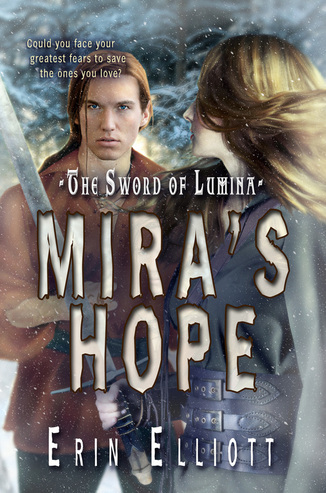 Today's author guest is published by the same publisher as my novel Cry of the Sea, Fire and Ice Young Adult Books. She is writing a trilogy of high fantasy young adult novels that would enthrall any fans of elves and magic. I was amazed that her first novel The Sword of Lumina: Mira's View was released in May of 2014, and the sequel, The Sword of Luminia: Mira's Hope, was released a mere five months later. Wow! That was some speedy writing and editing. Erin is an author on a mission. I asked her if she would write about how she was able to put together a sequel so quickly, and here is her response. Enjoy! Erin Elliott: The question for the day, how does one write a sequel so quickly to the first book? For me, it was simple. Long before I’d even started the first book, I had the whole story laid out in my mind. I knew right from the start that I wanted a three part series— that’s right, the third part comes out in April/May 2015. I knew roughly what would happen in each story and where I would put the break. Now granted, I had a great deal of filling out to do, but the main idea was all in my head. I knew how I wanted the story to start, how I wanted it to end, and a little bit of what would happen on the journey in-between. This was something that I spent a lot of time thinking about before I even began to write it all down. Plus, like a good book, once I got started, I was anxious to see where the characters would lead me. I think all authors go through a period where they just start writing, not sure where their characters will go, and find themselves pleasantly surprised with the end results. The same held true for me. I started with my main character and let her lead me down the path of her great adventure. It was exciting and I enjoyed almost every minute of it! I also seem to suffer from a condition called, I-have-to-write-it-all-down-quickly-or-I’ll-lose-my-mind. You may not have heard of it before, but I assure you, it’s very real. The main symptom of this rare disorder is: having to write everything down or the characters in your mind feel the need to drive you crazy until you’ve told their story. I feel like my mind will explode if I don’t get it down on paper. It’s a bit like cramming for an exam. You spend a whole night, or several nights in a row studying and studying for a test that you know will be worth half your grade until the day of the actual exam. On that day, your brain screams for you to get all that information out or it’ll simply do a dump, making you forget everything that you tried to shove in. That same feeling is the one that I get when I’m really into a story that I’m writing. Debilitating, but at the same time, it allows me to get a lot of writing done! The fact that I can fly while typing, is also a benefit to writing quickly, especially concerning my disorder. Once I get started, it’s nothing to write several thousand words a day. Put all these things together and it makes me into an effective writing machine, capable of producing sequels at an alarming rate! Whether or not they’re good, is for the masses to decide, but I’m proud of them either way! Thank you Donna for inviting me to share my story and writing process on your blog. It’s been fun! Please follow these links and learn more about Erin's writing. https://erinelliottwriter.wordpress.com/ Facebook: https://www.facebook.com/swordoflumina Goodreads: https://www.goodreads.com/author/show/8338995.Erin_Elliott Fire and Ice (publisher): http://www.fireandiceya.com/authors/erinelliott/1mirasview.html Get her books: The Sword of Lumina: Mira's View The Sword of Lumina: Mira's Hope 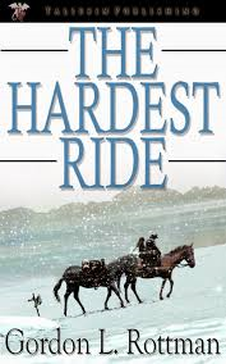 This week's guest has visited the blog before when he wrote about his efforts to revise one of his novels. Setting himslf apart from the usual trend of paranormal and romance stories that fill the YA shelves, Gordon L. Rottman has written a western called The Hardest Ride. He is now working on a sequel to that novl. Here are his thoughts about what makes a good sequel. It's good advice, and I'll definitely keep it in mind while writing my sequel to Cry of the Sea. Gordon L. Rottman: What makes a good sequel novel? Much has to be considered. Character changes and additions. Changes to settings and the situation. Is it a continuing story or a new story? And so on. Here’s some advice to make it work.
I could talk a great deal about developing the sequel for The Hardest Ride, Ride Harder, but it’s pretty involved. I’ll mention a couple points. When I wrote the novel I had no idea that Marta, a fiery 16-year old Mexican girl with a strong will and ability to express herself even though mute, would steal the stage from Bud, an out of work drifter. It meant the novel became more popular among women than guys. It wasn’t just a Western. In the sequel Marta plays an even larger role and it begins with Marta being, well…very Marta. Things will soon be in complete turmoil, but she’ll prevail. She also finds her future jeopardized after being robbed of her hard-earned money, recovering it, and getting robbed again. To get the money back again they must face an even more dangerous opponent than in the original story. In the original, Bud picked up a sidekick, who regrettably was lost to us. In the sequel, Flaco will be “replaced” by two sidekicks, playing different rolls. Readers are already familiar with the likable Musty, while Samson Long Shadow infiltrates his way into sidekick-ness. Simply put, your goal, while giving the reader more of what they liked in the first book, is to write an even more engaging story. Gordon Rottman lives outside of Houston, Texas, served in the Army for 26 years in a number of “exciting” units, and wrote war games for Green Berets for 11 years. He’s written over 130 military history books, but his interests have turned to adventurous young adult novels—influenced by a bunch of audacious kids, Westerns owing to his experiences on his wife’s family’s ranch in Mexico, and historical fiction focusing on how people really lived and thought—history does not need to be boring. His first Western novel is The Hardest Ride to be followed by more. The Hardest Ride--A Western novel, Hartwood Publishing (e-book, paperback, audiobook)Peacemaker Award Winner- Best Western and Finalist- Best First Western Novels Spur Award Finalist- Best Traditional Western Novel Available at Amazon Tears of the River--A YA survival e-novel, Hartwood Publishing Available at Amazon |
D. G. DriverAward-winning author of books for teen and tween readers. Learn more about her and her writing at www.dgdriver.com Archives
July 2024
Categories
All
|
Author D. G. Driver's
Write and Rewrite Blog
“There are no bad stories, just ones that haven’t found their right words yet.”
A blog mostly about the process of revision with occasional guest posts, book reviews, and posts related to my books.
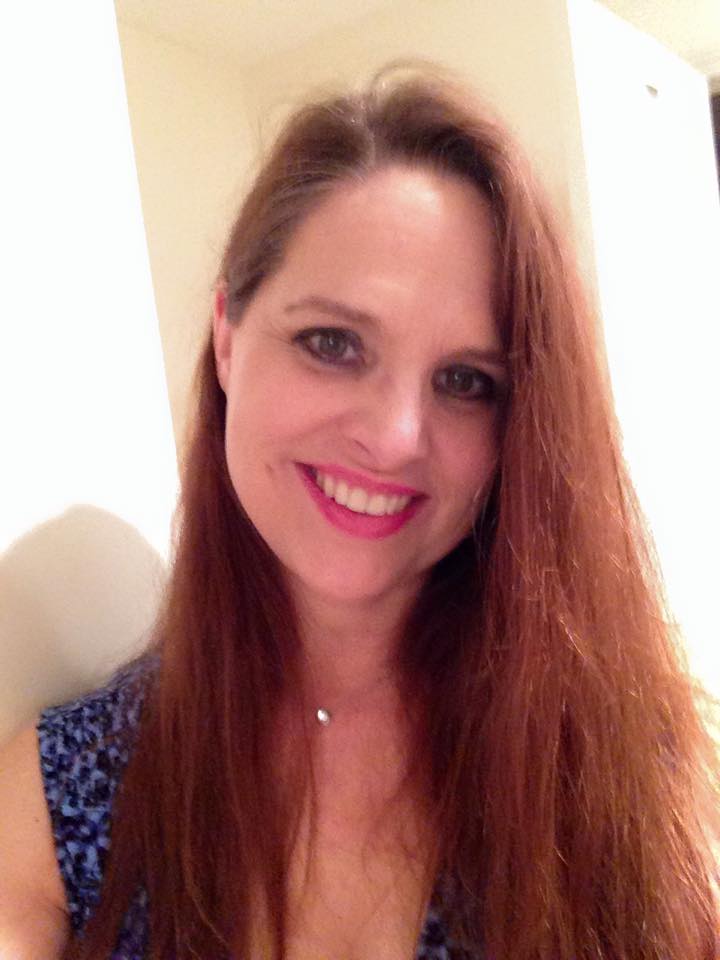
 RSS Feed
RSS Feed